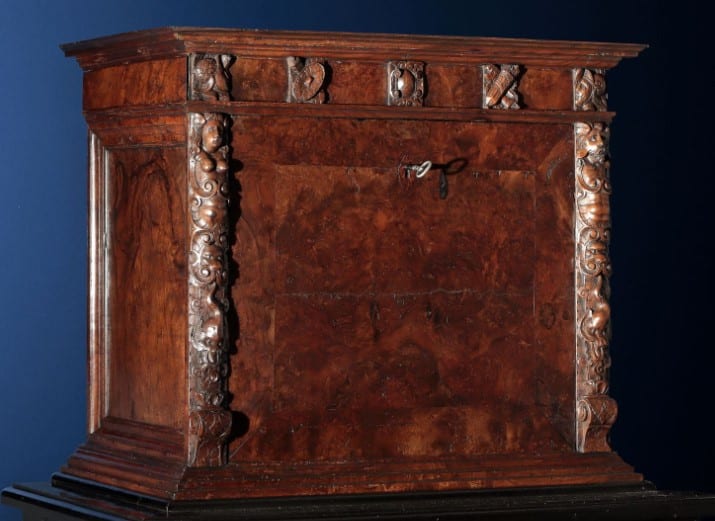
Today’s word is: mask. We explain what it is, where it is used and the ancient origin of this decoration of furniture and buildings.
What is the mask?
The mask is a plastic decorative element that consists of a human or animal face with deformed and grotesque features. It was used both in architecture and in cabinet-making and its origins are ancient.
Where does the mask come from?
Traces of masks have been found in many ancient civilizations : both in the Far East and in ancient Egypt, but even in the pre-Columbian civilizations of South America. In the Mediterranean, certainly, the custom of inserting these swollen and frightening faces in architectural works was spread by the ancient Greeks. Probably, it was an image that recalled some myths in which a hero cut off the head of a monster, or, perhaps, it was the citation of a mask used in exorcism rituals or in theatrical performances. It is also assumed that the masks present in the ancient Hellenic fountains resumed the features of the divinities linked to the rivers: in fact, water flowed from their mouths. In all likelihood, all these resonances have contributed to the fortune of this decoration of great emotional impact.

After the Greeks, it was the turn of the Romans who left us numerous testimonies of the use of masks not only in buildings but also in sculptures and in some domestic furnishings. The most famous of all is undoubtedly the Mouth of Truth, an ancient Roman manhole enhanced in the Church of Santa Maria in Cosmedin in the ‘600. During the High Middle Ages, this plastic decoration suffered a sharp decline and fell into disuse, gradually coming back into vogue starting from the Romanesque period and, with even more impetus, in the Gothic one. It was, however, in the Renaissance that the conscious and studied revival of ancient models led to a very wide diffusion of these forms. Subsequently, the desire for originality that will also incubate the birth of the new Baroque style led these figures to an evolution in a caricatural sense and, therefore, if possible, even more grotesque. The climax of this process led the masks to become elements no longer only decorative but autonomous and structural in fountains, arches, doors, windows and gables.
Masks in cabinet-making
Metal or carved wooden masks were used abundantly in sixteenth-century Italian furniture. These sculptures or paintings are frequently found in the center of the doors, on the fronts of the drawers, in the bands of Renaissance sideboards and, more generally, in the uprights of many pieces of furniture and chests.
An example
Among our “selected” products there is a beautiful example of mask in a particular Italian furniture dated right between the ‘500 and’ 600. It is a Tuscan cabinet in walnut, with veneer in briarwood, richly decorated. In this exceptional piece of furniture, in addition to masks, we also find other old acquaintances from the dictionary of antiques, such as caryatids. Inside, it has twelve drawers and two side doors well framed by carvings in walnut briar. All the decorations, rich and varied, refer to the iconography of the grotesques.
We take this opportunity to remind you that this weekend it will be possible, exceptionally, to visit all the warehouses of our headquarters in Cambiago, for all readers of the Antiques Dictionary it will therefore be the right opportunity to measure themselves in their ability to find and recognize these decorative elements. A real chanche to test your passion for antiques, do not miss!










